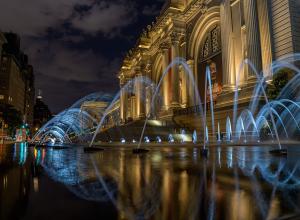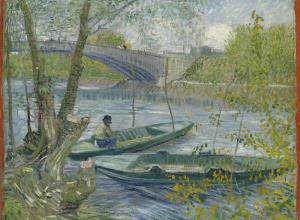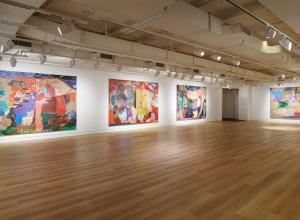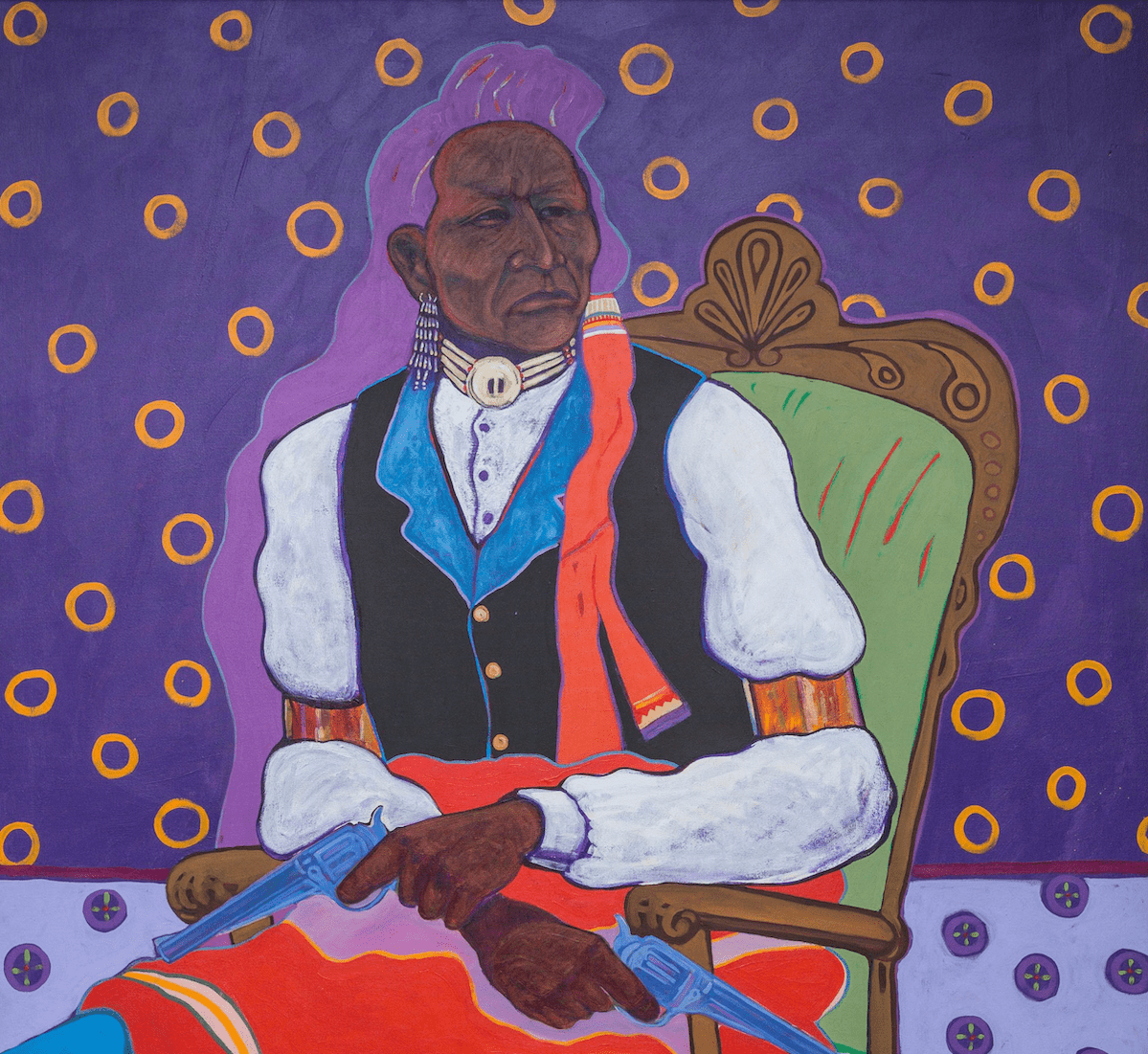
T.C. Cannon, Two Guns Arikara, 1973/1977 (Detail)
While Vincent van Gogh’s The Starry Night—which is among the most famous paintings in the world—draws three million visitors a year to New York’s Museum of Modern Art (MoMA), there are many other works in the museum's collection that are worth a pilgrimage. Established in 1929 by Abby Aldrich Rockefeller, Lillie P. Bliss, and Mary Quinn Sullivan with the intention of making contemporary art more accessible and understandable, MoMA's permanent collection is a veritable treasure trove, including approximately 200,000 works in a variety of media, encompassing all major modern art movements. If you plan on visiting, and need a guide to help you navigate, here’s a list of ten "must see" works that are on view compiled with help by MoMA’s curators. Our list includes many gems that the general public may not be aware of. And don’t worry, there is a work by Vincent van Gogh on our list—just maybe not the one you were expecting!
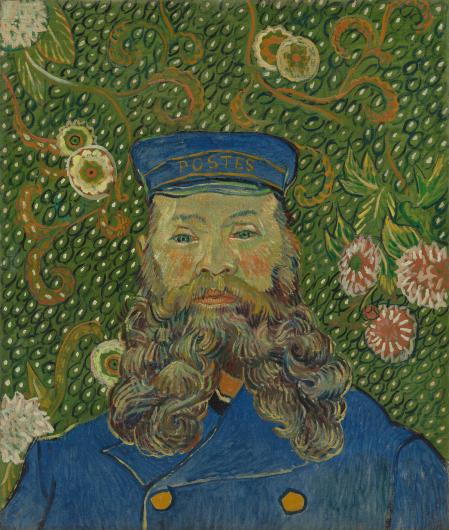
While The Starry Night draws the largest crowds, iconic Dutch Post-Impressionist painter Vincent van Gogh’s Portrait of Joseph Roulin, c. 1889, is a superb example of his focus on capturing the psyche of the sitter. One of six portraits van Gogh (1853–1890) painted of his friend Roulin, the portrait’s vivid colors, wonderfully tactile brush strokes and sinuous lines breathe personality. Roulin, proudly wearing his blue postal uniform, sits in front of exuberant green floral wallpaper, the twining vines echoing the curls of Roulin’s impressive beard.
Image: Vincent van Gogh, Portrait of Joseph Roulin, c. 1889
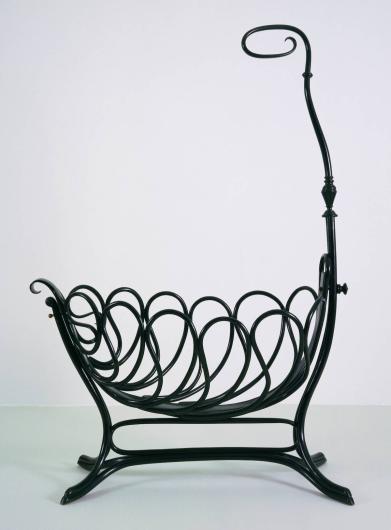
This striking Child's cradle (model 1573), c. 1895, designed by Austrian furniture and interior design company J. & J. Kohn, epitomizes chic Art Nouveau furniture. Ebonized bent birchwood curled into impossible teardrops creates a delicate egg-shaped crib that feels elegantly gothic. Brothers Joseph (1817–1884) and Jacob (1791–1868) created standardized, inexpensive furniture whose components could easily be shipped and assembled almost anywhere.
Image: J. & J. Kohn, Child's cradle (model 1573), c. 1895
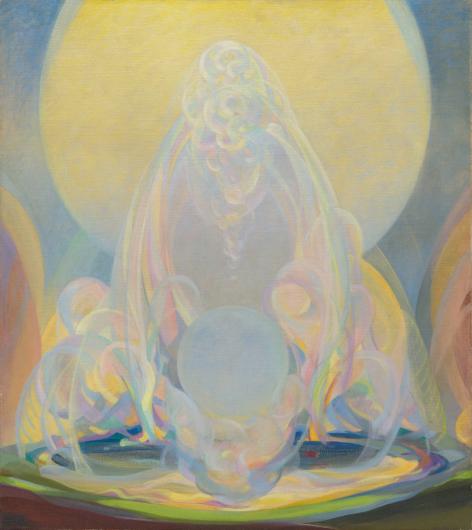
Pioneering German-born American painter Agnes Pelton (1881–1961) was conventionally trained, but her true passion was abstraction. A member of the short-lived Transcendental Painting Group, Pelton’s innovative compositions explored metaphorical symbolism, using veils of light and biomorphic forms. She had three one-woman shows in Manhattan from 1929-1932, before moving to California, where she exhibited at prominent West Coast institutions. The Fountains, one of her first abstractions, was painted in 1926. An excellent example of her celebrated style; the work features glowing spheres and arcs of shimmering water cohering into a mystical fountain.
Image: Agnes Pelton, The Fountains, 1926
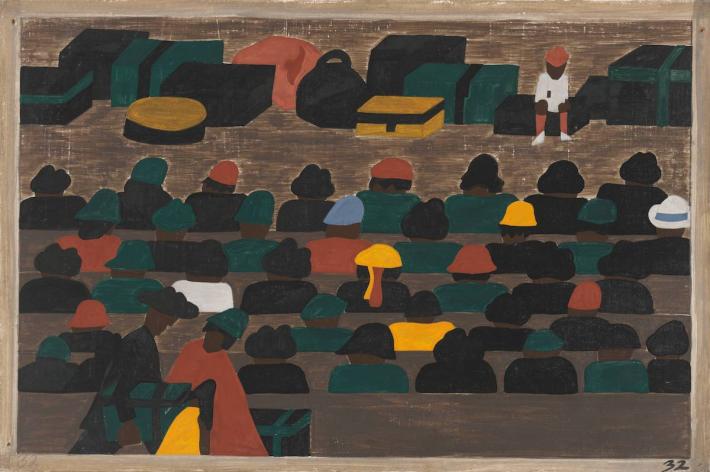
Internationally recognized American painter Jacob Lawrence (1917–2000) chronicled the rich complexity of Black life and history as an integral part of America with his vivid tableaux, using a style he dubbed "dynamic cubism.” In 1942, Lawrence broke through racially enforced segregation, becoming the first African American artist to have work acquired by the Museum of Modern Art. Part of his narrative series about the Great Migration, The railroad stations in the South were crowded with people leaving for the North, 1940-41, captures the colorful chaos and mixed feelings of a railway migration.
Image: Jacob Lawrence, The railroad stations in the South were crowded with people leaving for the North, 1940-41
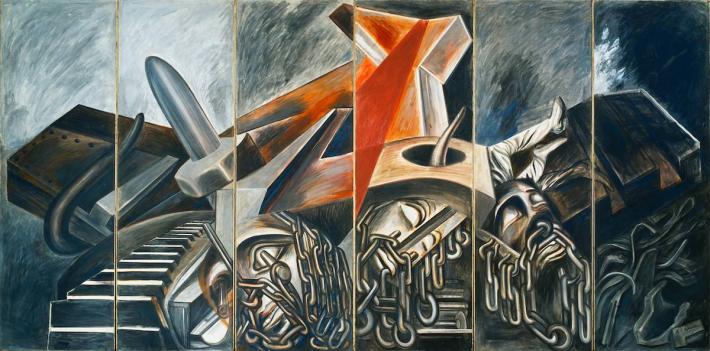
Mexican artist José Clemente Orozco (1883–1949) specialized in political murals. Commissioned by MoMA to paint Dive Bomber and Tank in 1940, for the landmark exhibition "Twenty Centuries of Mexican Art," Orozco spent ten days painting the impressive six-panel fresco, in public view. Disturbing abstracted elements of warfare are arranged across the panels, including piles of chains, tragic metallic humanoid faces, propellers, tank treads, and a pair of upturned human legs. The huge panels are interchangeable; MoMA recently rearranged the monumental work to offer a new experience of Orozco’s work.
Image: José Clemente Orozco, Dive Bomber and Tank, 1940
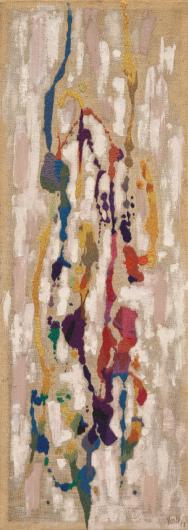
A critical proponent in advancing abstraction within the Argentinian art world, Yente (Eugenia Crenovich) (1905–1990) challenged the boundaries of traditional art, combining painting, relief, and sculpture to create brilliant non-figurative work. Yente was introduced to abstraction through her partner Juan Del Prete–whose work often overshadowed her own contributions. Tapestry no. 6, 1958 showcases her powers of abstraction, combining layers of colored paint and wool embroidery thread to create an evocative visual experience.
Image: Yente (Eugenia Crenovich), Tapestry no. 6, 1958
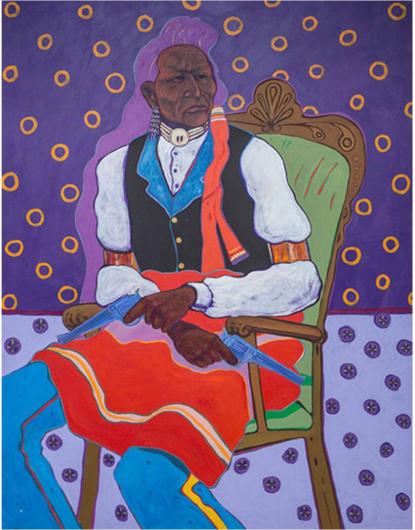
Multi-media Indigenous artist T.C. Cannon (Kiowa-Caddo, 1946–1978) was part of a generation of artists who revolutionized Native American art, injecting change into traditional visual styles. Coming of age during the turbulent 1960s and 1970s, Cannon created his own visual vocabulary. Two Guns Arikara, 1973/1977, with its bold brushstrokes and vibrant colors, integrates Impressionist and Pop art styles within the context of his heritage.
Image: T.C. Cannon, Two Guns Arikara, 1973/1977

Brazilian artist Lygia Clark (1920–1988) helped found the Neo-Concretist movement in the 1950s. Clark radically experimented with form, color, and plane, and encouraged viewer interaction with her art. The Inside Is the Outside, 1963, is one of Clark’s hinged metal sculptures–which she called Bichos–through which she transformed stainless steel into biomorphic, curvilinear, dynamic forms, meant to be fluidly manipulated.
Image: Lygia Clark, The Inside Is the Outside, 1963
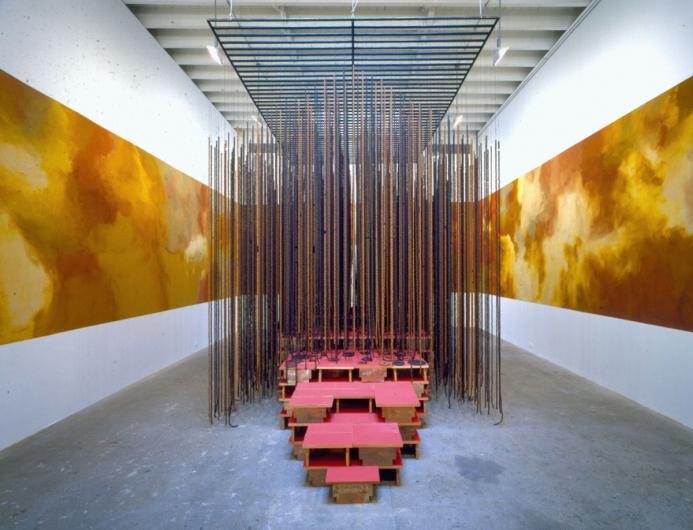
Best known for his contemplative installation art, the renowned Thai multi-media artist Montien Boonma (1953 – 2000) combined industrial building materials and architectural elements with spices and fragrances, drawing from Thai culture and Buddhist iconography to create spaces that encourage meditative states–using sensual art as a tool for stillness. His installation, House of Hope, invites viewers to step through thousands of scented prayer beads into a spiritual space, presenting home as a temple.
Image: Montien Boonma, House of Hope, 1996-1997

American Donna-Lee Phillips (1941) was one of a cohort of conceptual photographers known as the ‘Photography and Language’ movement. Spearheaded by Lew Thomas, these photographers combined images and words to explore and interrogate the relationship of photography and language. Offering wry commentary on identity, Fragments from a Visual Journal (16 November, 1977–12:00 pm), 1977 shows Phillips sitting, a typed journal entry printed on the wall behind her, wearing a black t-shirt stating “I AM AN IMAGE.”
Image: Donna-Lee Phillips, Fragments from a Visual Journal (16 November, 1977–12:00 pm), 1977
Megan D Robinson
Megan D Robinson writes for Art & Object and the Iowa Source.





